Weekly birding round-up: 4 - 10 Jul 2023
If there’s any such thing as a typical midsummer week, the one just gone felt much like it. Seabirds starting to make the daily news, passerines fading into obscurity, ducks similarly almost an afterthought, but waders livening things up. Meanwhile, for eye-catching headline rarities, we need look no further than the extremes of northern and southern Britain, and southwestern Ireland…
It’s either a striking coincidence that a Pacific Swift should be found in Shetland in two consecutive years, or the same bird defying all odds and expectation and actually returning whence it was last seen a full year after the event, but one way or another, the bird found at Sumburgh last week was a pleasant surprise, albeit a fleeting one.
Better still, as the new week dawned on 4th, it was relocated a little way inland and north of Sumburgh, scything around the airspace over Dunrossness. By the late afternoon it had dropped down to the insect-rich airspace over Boddam, and proceeded to put on a stunning display low overhead well into the evening.
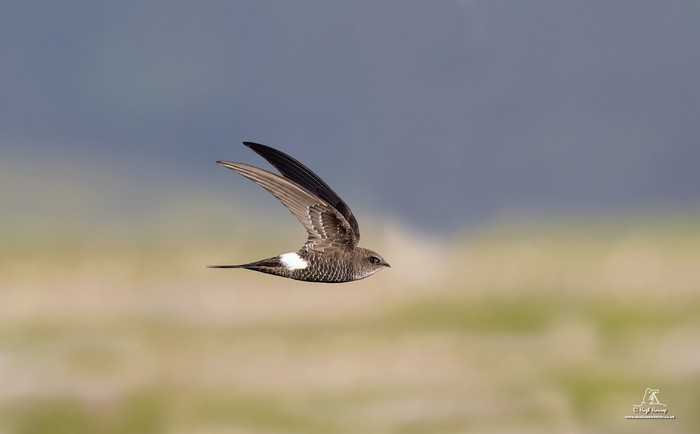
First thing on 5th it was still present at Boddam, but then set off into the blue yonder. That, surely, was the end of the Pacific Swift story?
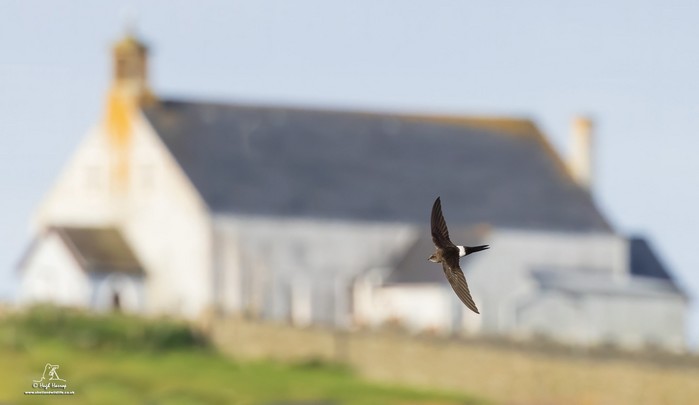
Well, no. For on 6th a bird, one would assume the selfsame individual, was found in Highland & Caithness heading west in the early afternoon at Stittenham. Were it not for that sighting, one would assume the Shetland bird had never gone away, for it was seen again on 8th screaming north over Pool of Virkie. Where, if anywhere, will it next be seen – or do we need to wait until 2024?
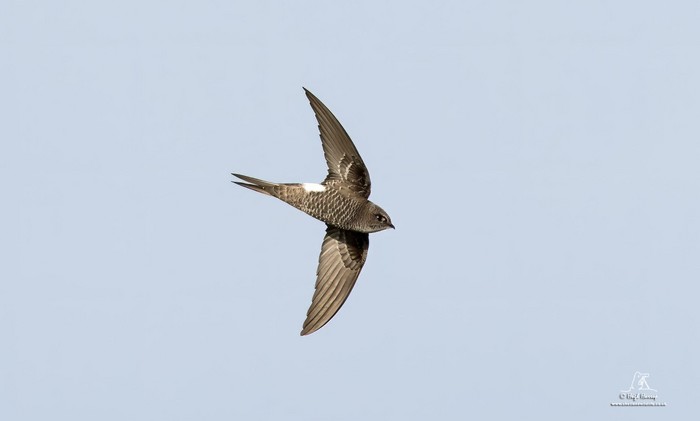
Whilst not quite annual these days, we’re certainly slap bang in the middle of the window when, if a Roller was going to turn up in Britain, it might choose to do so. June’s the peak month for them, but July is certainly no slouch, with 24 of the 127 accepted birds post-1950 owing themselves to the present month.
Those past two dozen birds were well-scattered, from Shetland in the north to Cornwall down in the very southwest. Additional southern coastal July records have come from Kent and Sussex but not, until this week, from the Isle of Wight.
While a Roller isn’t the rarest of birds in a British context, it’s still a big slab of turquoise chutzpah, is always a classy find, and is going to prove locally popular at least. The adult bird found this week, at Brading Marshes RSPB on 8th-9th, was all of the aforementioned, and only the third record for the island.
Hovertwitch! An enjoyable short journey to the Isle of Wight by bus, boat and hovercraft for the Roller at Brading Marshes. Showed better than it looks from my photography! pic.twitter.com/9Hrlnzzeo9
— Dan Beadle (@DanBeadle5) July 9, 2023
More to the point, the first record for well over 100 years – both previous birds having been shot near Sandown in 1884 and 1886 respectively. This week’s bird was, to all intents and purposes, a county first and as such deserved its appreciative audience.
The very definition of coming late to the party, as the new week dawned on 11th came news that in the last half hour of the week just gone, from 11:30pm on 10th, a Barolo Shearwater had been heard in song near the bird observatory on Cape Clear (Co.Cork).
Being in the right place at the right time and fortunate enough to encounter one of these compact shearwaters, either from headland or at sea, is doubtless thrilling. Most of us, mind you, wouldn’t know – they’re a much harder seabird proposition to catch up with in Britain or Ireland than, say, Fea’s / Desertas Petrel.
Getting to hear one in song though on these shores – that’s an even rarer prospect still. Not without precedent, though – there was a male that spent some time on Lundy (Devon) in two consecutive years, being heard in song there on 4th-24th June 2010, and then again on 21st April – 5th May 2011.
Further back into the mists of birding time, there was another site-faithful bird that took up summer residence on Skomer (Pembrokeshire), heard there on 26th June – 10th July 1981, and again on 21st June – 25th July 1982.
In both instances, the birds in question weren’t one-night-wonders. We’ll see what happens on Cape Clear in the days – or rather, the nights – to come.
The sea-watching season continued to go smartly through the gears this week, with plenty more land-based sightings of Wilson’s Petrel delighting those who’d parked themselves on a headland and put in the hours. A shade over 40 birds were logged in Britain and Ireland as a whole. The Irish contingent – nearly 30 birds – were almost entirely contributed by observers in Co.Cork, not least at Galley Head where 15 birds were seen on 7th alone – while on the same day five were noted from Toe Head and two from Cape Clear; Co.Mayo got a look-in with a single bird seen from Annagh Head on 8th. The week’s Scilly pelagic tally was just three birds at sea on 6th; Cornish observers, meanwhile, continued to notch up birds – two from Merthen Point on 4th; singles off Pendeen on 4th and 8th; another single off Pendennis Point on 4th; six from Porthgwarra on 4th, and a single off there the following day; and a singleton off The Lizard on 6th. Two were reported from Strumble Head (Pembrokeshire) on 9th.
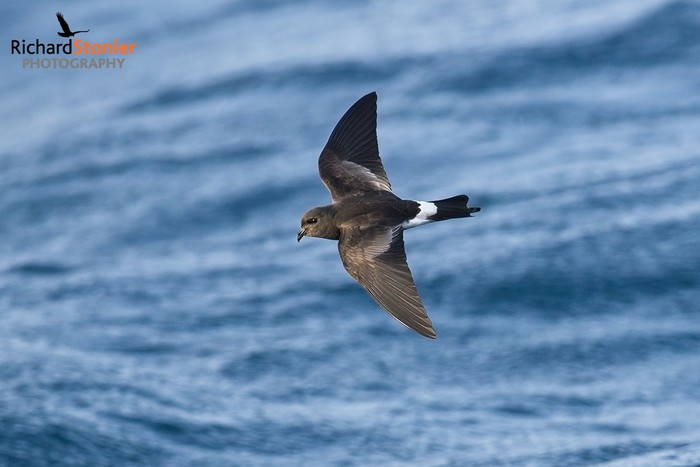
All of that observer effort was always likely to be rewarded with something rarer still, and this week it was the turn of Co.Cork to enjoy a Fea’s / Desertas Petrel, seen passing Ballycotton on 6th.
Large shearwaters continued to be seen in modest numbers. Just a few Great Shearwaters were logged – single birds off Porthgwarra (Cornwall) on 4th followed by two from there on 9th, and one more on 10th; Berry Head (Devon) on 10th; Galley Head (Co.Cork) on 7th; on 8th in Co.Cork from Toe Head and Ballycotton; and on 9th southeast of Skibbereen (Co.Cork) from a pelagic. On 10th five birds were noted passing Cape Clear (Co.Cork).
Cory’s Shearwaters meanwhile were somewhat more numerous, with around 70 birds seen from Cornwall, Scilly and southern Ireland. Peak counts of the latter were half dozens noted from the Scilly pelagic of 6th and off Porthgwarra (Cornwall) on 8th, before nine were seen from Porthgwarra on 10th and 20 off the Skellig Islands (Co.Kerry) in the evening of 10th.
A few Balearic Shearwaters were also seen lately – singles in Devon off Dawlish Warren NNR on 5th and Berry Head on 8th; off Selsey Bill (West Sussex) on 5th; and Porthgwarra (Cornwall) on 8th. One was seen from Portland (Dorset) on 4th, and two from there on 8th and 9th. Two were seen from Dawlish Warren NNR (Devon) on 9th. On 10th the pace quickened, with 28 birds seen from Berry Head (Devon), and singles from Carnsore Point and Hook Head (Co.Wexford), and off Brixham (Devon).
Nearly 50 Pomarine Skuas across the region were a good haul, helped enormously towards that cumulative total by Ireland, where 21 birds were seen from Galley Head (Co.Cork) on 7th. Galley Head also notched up a Long-tailed Skua on 7th, following another seen the previous day from Toe Head (Co.Cork); another bird was reported as seen perched on rocks on the shore of Fair Isle (Shetland) on 9th.
In the evening of 10th, as the week was beginning to quietly wind down, news came of one final notable seabird – a Black-browed Albatross seen at sea some eight miles off Rhyl (Denbighshire) in the vicinity of the Gwynt Y Mor windfarm.
Another week’s long-legged beasties began with a couple of new Night Heron sightings on 4th – at Coombe Hill Meadows NR (Gloucestershire) and Burton Mere Wetlands RSPB (Cheshire & Wirral). Settled birds remained at Adwick Washlands RSPB (South Yorkshire) on 4th-10th, and at Ouse Washes RSPB (Cambridgeshire) on 4th-9th. Another new bird was found on 9th in Oxfordshire near Sutton Courtenay.
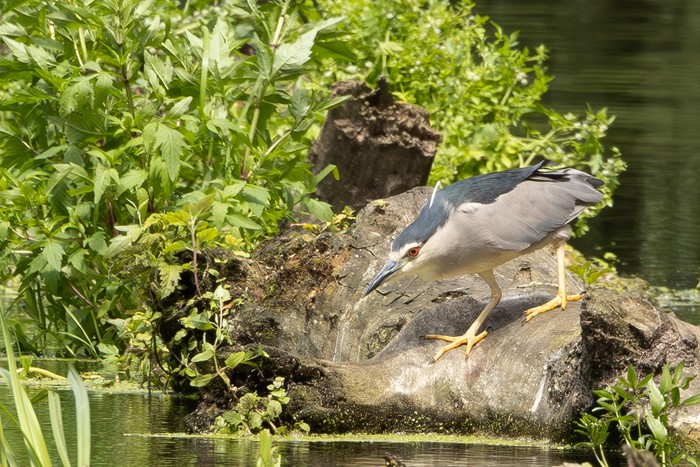
The first-summer Purple Heron remained at Gosforth Park (Northumberland) on 4th-10th, with another possible seen on 4th at Innerleithen (Borders).
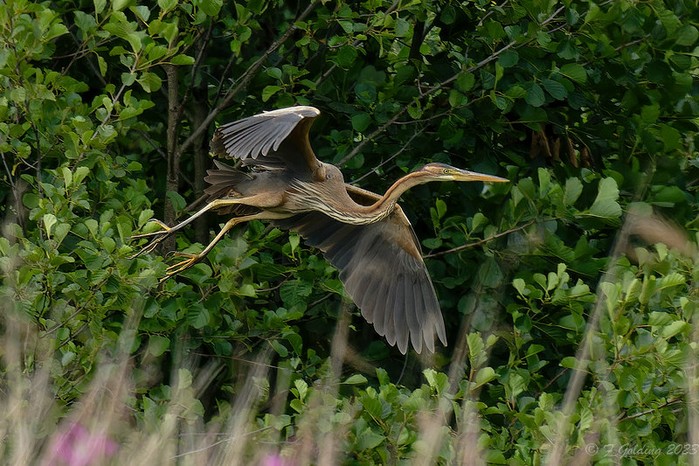
Sporadic sightings of Glossy Ibis continued for another week – we’ll see in due course whether more meaningful news about their fortunes this year emerges. But for now, in Norfolk a single bird was again noted at Buckenham Marshes RSPB on 6th and 8th; one was still to be seen at Cantley Beet Factory on 8th-9th, with two birds present there in the evening of 10th. In Essex, a single bird remained at Blue House Farm EWT on 4th-9th, with a bird also seen at Abberton reservoir on 9th. One bird remained at Boyton Marshes RSPB (Suffolk) on 10th. Co.Wexford again gave us two birds at Tacumshin on 6th-8th, a singleton noted at Ring Marsh again on 7th, and three once more at Tacumshin on 9th.
Finally, a Spotted Crake was seen at Caerlaverock WWT (Dumfries & Galloway) on 4th.
Our brief weekly dally on the rarity duckpond is headed, of course, by Norfolk’s first and keenly anticipated Lesser Scaup, still present this week on Colney GPs on 4th-9th. Another was found on Grafham Water (Cambridgeshire) on 7th.
The drake Ring-necked Duck remained at Carlton Marshes SWT (Suffolk) on 5th-10th. Another drake was seen on 10th at Lisvane reservoir (Glamorgan).
A drake Ferruginous Duck was found on Draycote Water (Warwickshire) on 7th.
And finally, a drake American Wigeon was settled at Frampton Marsh RSPB (Lincolnshire) on 7th-10th.
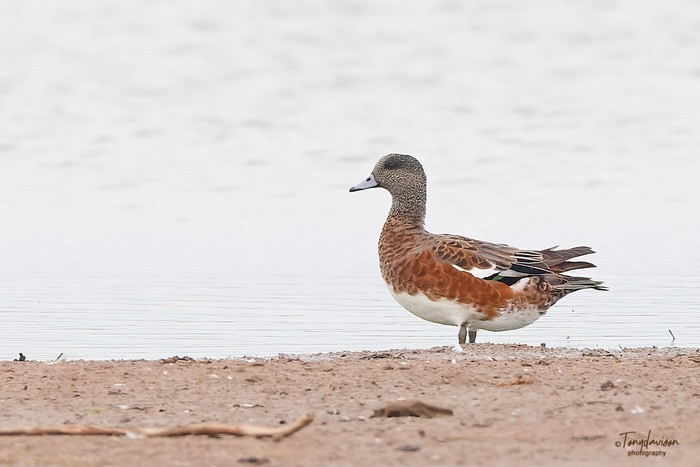
Where the wildfowl are waning at this point in the year, it’s time for the waders to wax mightily. None more so this week than the Marsh Sandpiper found in Kent at Dungeness RSPB on 8th… On the face of it, that’s not so remarkable – down the years Britain’s been blessed with around 150 prior birds, widely scattered too, both inland and at coastal counties, and as far north as Shetland. And them stats don’t lie – there’s no county with quite the magnetic appeal for Marsh Sand than Kent, with a mighty 25 past records.
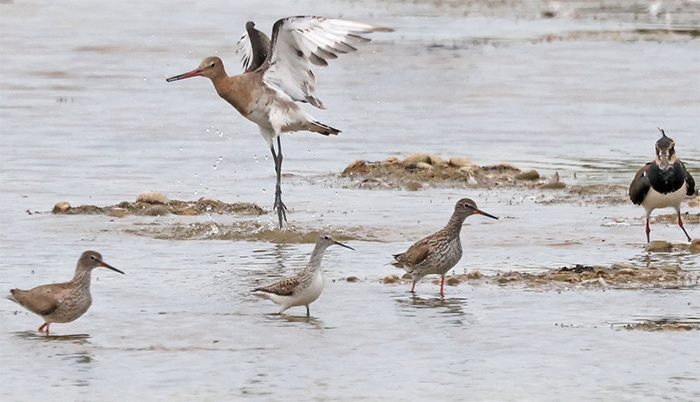
Scratch a little deeper beneath the surface though and we can see they’re playing somewhat harder to get in a national context, after a golden period of being virtually annual from 1980-2010 – there are a few more blank years creeping in during the past decade or so, and Kent’s far from immune from that. Almost a decade elapsed from a one-day bird at Bough Beech reservoir on 6th August 2009 until the next, at Cliffe Pools RSPB on 11th July – 5th August 2017; though then Cliffe Pools RSPB played a blinder with single birds that both clocked up over a week of residency in both 2018 and 2019. Established Kent birders may not be rushing to tick the county’s latest bird this week – but the species is surely establishing a little more rarity cachet these days than hitherto.
At the opposite end of the country, in Shetland the summering Broad-billed Sandpiper turned up again at Boddam, feeding beneath a hawking Pacific Swift on 4th.
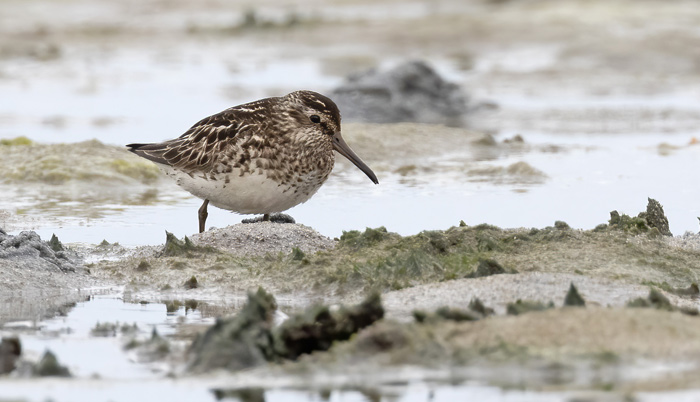
On neighbouring Orkney the Pacific Golden Plover was again seen on North Ronaldsay on 8th; another was found in East Yorkshire on 9th initially in flight past The Warren and latterly off Chalk Bank. In Norfolk a probable American Golden Plover was seen at Freshes Creek near Stiffkey on 5th.
Staying in Norfolk a moment, the Long-billed Dowitcher remained on show at Cley NWT on 4th-10th.

A Temminck’s Stint was present at Kilnsea Wetlands (East Yorkshire) on 5th-6th and again on 8th, and then at Beacon Ponds NR on 10th.
Cleveland meanwhile scored a Pectoral Sandpiper at Saltholme RSPB on 8th and Scaling Dam reservoir on 10th, with further birds seen on North Ronaldsay (Orkney) and at East Chevington NWT (Northumberland) on 9th, and on 10th at Snettisham RSPB (Norfolk), the Orcadian bird also still present as the week drew to a close.
Established Black-winged Stilts remained omnipresent at several sites for another week – Frampton Marsh RSPB (Lincolnshire) continued to host at least nine birds on 4th-5th, with at least three still present on 10th; the family party of six birds continued to thrive at Eddersthorpe Flash (South Yorkshire) on 4th-10th; two birds remained at Adwick Washlands RSPB (South Yorkshire) on 4th-9th; and the lonesome male was still hanging on at Slimbridge WWT (Gloucestershire) on 4th-10th.
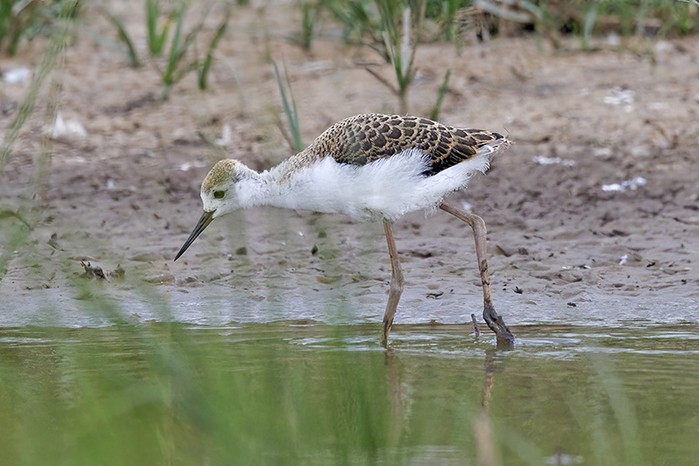
Away from the usual northern and western Scottish island locales, a male Red-necked Phalarope came to spend some time at Frampton Marsh RSPB (Lincolnshire) on 4th-7th.
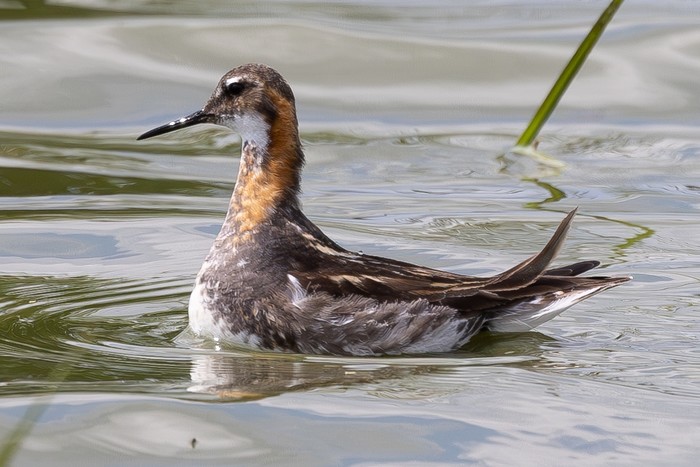
A return for a regular bird to Oare Marshes KWT (Kent) this week means a return for the gulls as a whole to the opening salvoes of the gulls’n’terns. Back for yet another annual sojourn, the adult Bonaparte’s Gull was present at Oare this week from 6th-10th.
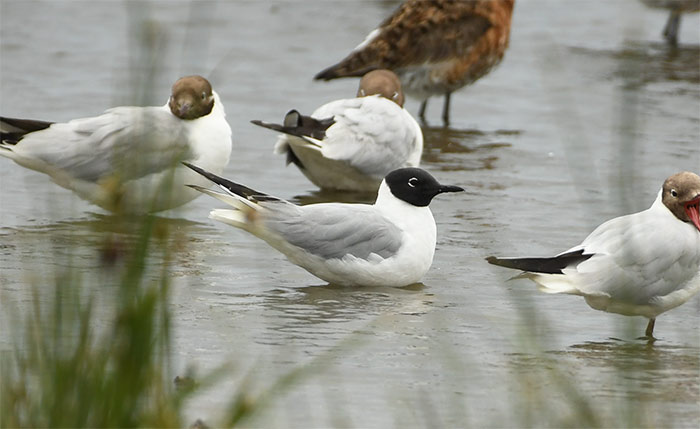
Sea-watching was beginning to reap some larid rewards lately - Sabine’s Gulls being seen in British and Irish waters alike. One from the Scilly pelagic of 6th was followed on 7th by a single off Cape Clear (Co.Cork), and two from Galley Head (Co.Cork).
White wingers meanwhile remained a predictable scarce commodity. Glaucous Gulls were seen in Shetland at Loch of Huxter on 4th, and on Unst on 6th and 8th; on the Lossie estuary (Moray) on 5th and 10th; and on 10th in Orkney on Westray, and on Islay (Argyll & Bute). Iceland Gulls meanwhile were noted in Lerwick (Shetland) on 6th, and on South Uist (Western Isles) on 4th-7th, with a possible seen from Fanad Head (Co.Donegal) on 9th.
And so to the terns, and the best of them again the adult male Least Tern once more seen in Co.Dublin in the Little Tern colony at Portrane on 4th and 8th-9th.
In Northumberland the adult surinamensis American Black Tern was again seen intermittently at Long Nanny on 4th-10th.
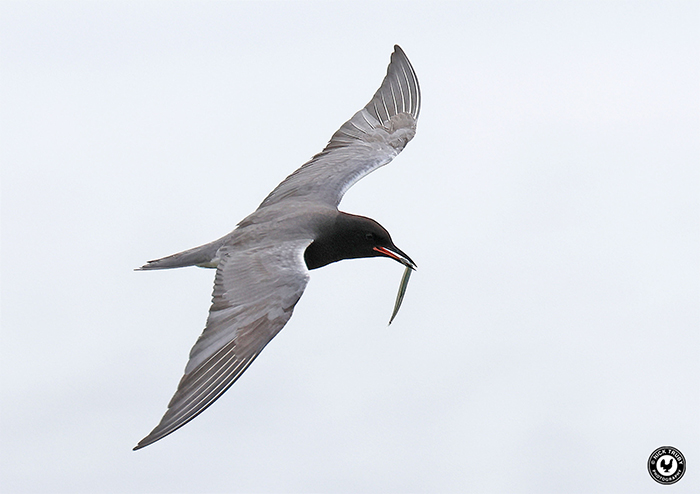
The recent White-winged Black Tern remained in Cambridgeshire at Fen Drayton RSPB on 4th, with another seen near Banchory (Highland & Caithness) on 6th; additional Scottish sightings came from Coalford (Aberdeenshire) again on 7th, and at Skinflats Lagoons RSPB (Forth) on 9th.
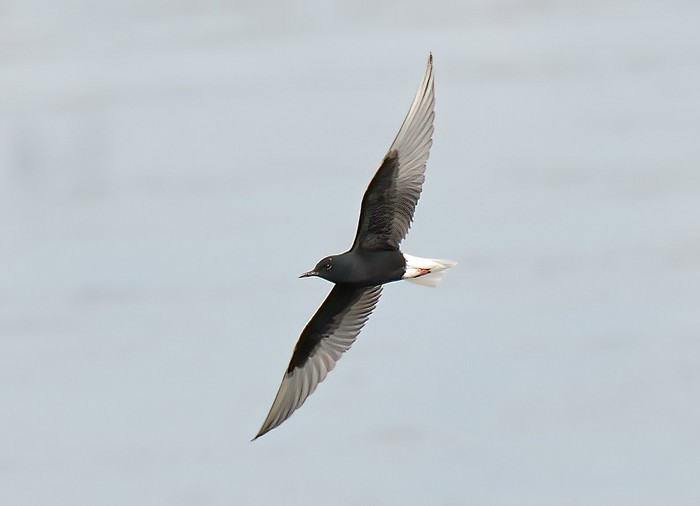
The week proved quietly fruitful for Caspian Terns - one was again seen in Norfolk passing Titchwell RSPB on 4th; followed by confirmed birds at Gibraltar Point NNR (Lincolnshire) on 6th, North Foreland (Kent) on 8th, and on Broadmeadows and Rogerstown estuaries (Co.Dublin) on 9th-10th. Norfolk sightings came thick and fast on 10th, with a bird seen at Brundall, Buckenham Marshes RSPB, and Potter Heigham Marshes. A further bird was reported further north, from Papa Westray (Orkney) on 7th.
Sketch of one of my Best Irish birds!!!! Caspian Tern, today 17:00 at Swords with many, many birders! pic.twitter.com/EsLiLLhxGG
— Jack Tynan (@JackTynan393114) July 9, 2023
Speaking of reported terns, we close the section with what, had it been firmed up, would have soared straight into the headlines – an unconfirmed report of a Bridled / Sooty Tern seen for 20 minutes off St Bees Head RSPB (Cumbria) on 5th…
Just one confirmed Black Kite this week is the pick of the raptors, seen on 4th at Conyer (Kent). Additional reports concerned a probable at Snettisham (Norfolk) on 6th, and a possible over Bletchley (Buckinghamshire) on 8th.
A male Montagu’s Harrier was reported from Thorne Moors NNR (South Yorkshire) on 7th.
We start the passerines, as ever lately, with splashes of colour. The Trimingham Trio of Bee-eaters remained in Norfolk on 4th-10th; while the dozen birds on St Mary’s (Scilly) stuck around to 5th, with three at least still present on the island on 6th. A single bird was a fine seawatching surprise at Porthgwarra (Cornwall) on 7th, the Scilly dispersal perhaps also accounting for the bird reported later in the day at Paul, and on 8th at St Levan. Another bird was reported near Chillenden (Kent) on 9th.
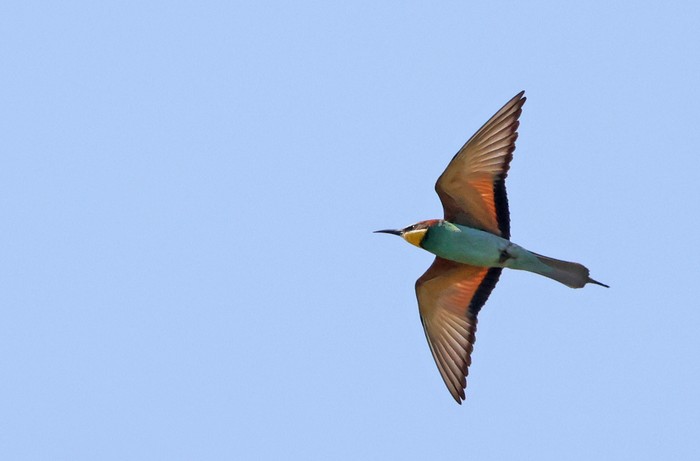
A Hoopoe was found on 4th at Slades Green (Worcestershire).
A very late Golden Oriole was seen on 10th on Burray (Orkney).
The influx of Alpine Swifts during the spring already has the feeling of a fever dream, so unprecedented were their numbers and their reach throughout Britain and Ireland. Normal service was slow to resume, as the influx went on for weeks, but we’re now back to normal, with the odd one or two seen every now and again. This week, a single bird was enlivening the evening of 10th in Port Carlisle (Cumbria).
The pallidirostris Steppe Grey Shrike was last seen in Highland & Caithness near Branault on 4th; while on North Ronaldsay (Orkney) the recent Red-backed Shrike was still present on 5th-9th.
Shetland gave us a couple of singing Marsh Warblers still – one tucked into the lushness of Swinister on 4th-7th still, and another in Lerwick on 5th.
A singing Great Reed Warbler was reported from Tidenham Chase (Gloucestershire) on 8th-9th.
A Rose-coloured Starling was seen at Spanish Point (Co.Clare) on 6th, and another on 9th at Embsay (North Yorkshire).
The singing male Bluethroat remained at Slimbridge WWT (Gloucestershire) on 4th.
A Black-headed or Grey-headed Wagtail was seen in Dorset at Middlebere on 7th. A Blue-headed Wagtail was seen by Loch of Spiggie (Shetland) on 10th.
The Isle of Wight gave us a report of a Tawny Pipit at Culver Down on 6th.
Finally, a Common Rosefinch in song in a garden near Muir of Ord (Highland & Caithness) on 9th had been present there for at least two days beforehand.
France was enjoying a good run of form again this week with, in addition to the White-rumped Swift still hanging out amongst the Red-rumped Swallows at Minerve on 5th, a Bulwer’s Petrel seen on 5th at Plage du Grand Crohot, and an Elegant Tern at Portiragnes on 5th also. Additionally, a female King Eider was still present on 8th at Pointe d’Illemont.
The Netherlands, meanwhile, were treated to a singing Green Warbler near Borssele on 6th, and a pale morph Booted Eagle over Vianen on 10th.
In Spain, a Moroccan-ringed Hooded Vulture was found feeding at a carcase at Vidrieros on 5th.
Is it too soon to be thinking about wayward waders? Are we, dare we say it, in the early throes of autumn wader passage? Certainly the coming week is a good one for past records of Pacific Golden Plover, with nine birds on the books since 1950…
It’s also traditionally a good time to pick out a White-rumped Sandpiper at your local wetland or coastal site. While I know everyone wants to be staring down the barrel of a scope looking out to sea right now, spare a thought and a few minutes for the shorebirds. You might be glad you did.
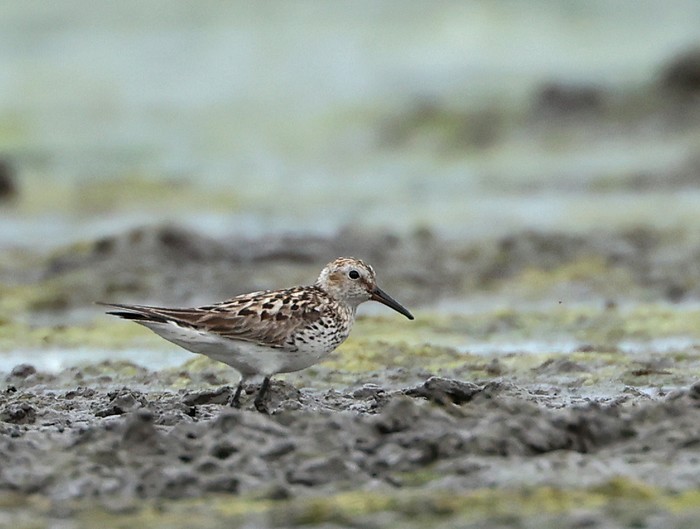
Jon Dunn
27 Jun 2023
Many thanks to all this week's contributors for your photos and videos
Share


